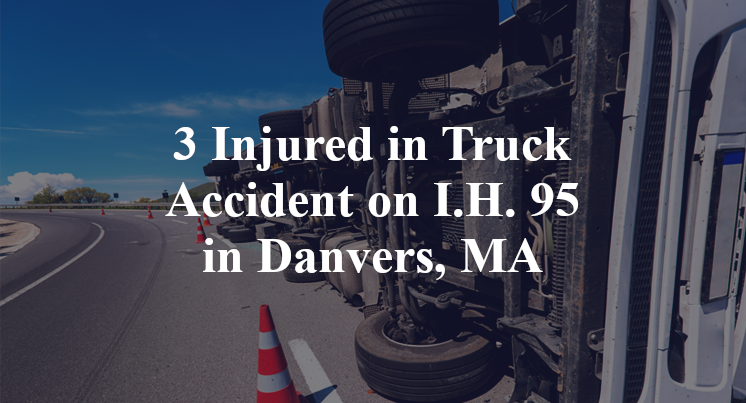3 Injured in Truck Accident on I.H. 95 in Danvers, MA
Danvers, MA — July 21, 2025, three people were injured due to a two-truck accident at the end of rush hour along Interstate Highway 95.
According to authorities, the accident took place on Interstate Highway 95 in the vicinity of Center Street.

Officials indicate that, for as yet unknown reasons a collision took place between two southbound vehicles: an 18-wheeler with a trailer in tow, and a box truck.
The person who had been behind the wheel of the 18-wheeler was apparently entrapped in the wreckage and had to be extricated by emergency personnel. The freed victim and two others reportedly sustained injuries of unknown severity; they were each transported to local medical facilities by EMS in order to receive necessary treatment.
Additional details pertaining to this incident—including the identities of the victims—are not available at this point in time. The investigation is currently ongoing.
Commentary by Attorney Michael Grossman
When two commercial trucks collide on a major highway like I-95—especially during or just after rush hour—it raises a key question: Did one of the drivers fail to anticipate changing traffic conditions? Professional drivers are trained to leave space, monitor surrounding vehicles, and react calmly in congestion. So when a crash happens anyway, something about that system likely failed.
The fact that one driver had to be extricated suggests a high-energy collision, which is unusual when both vehicles are reportedly traveling in the same direction. That leads to further questions: Was one truck slowing down or stopped in traffic when the other struck it from behind? Did a lane change or merge happen too quickly? Or did one vehicle experience a mechanical issue, leaving the other with no time to react?
Black box data from both vehicles will be key to answering these questions. That data can confirm speeds, braking, and throttle input in the seconds before impact—evidence that becomes especially important in crashes where visibility or reaction time may have played a role. Investigators will also want to examine driver logs, as fatigue and scheduling pressures can sometimes lead to delayed reflexes or reduced alertness.
It’s also important to understand whether both trucks were operated by private companies or larger fleets. If so, driver training, equipment maintenance, and dispatching practices may come under scrutiny. These aren’t just individual driving issues—they’re systemic concerns that can shape how well-prepared drivers are for split-second decisions in high-pressure traffic.
Key Takeaways:
- A crash between two trucks traveling in the same direction suggests a possible failure to anticipate traffic slowdowns or lane changes.
- Black box data will help reconstruct vehicle speeds, braking behavior, and timing before impact.
- Entrapment of one driver points to a high-energy collision that may involve excessive speed or delayed response.
- Investigators will likely review driver logs, maintenance records, and company practices around training and scheduling.
- Determining responsibility depends on more than just vehicle positions—it requires a full review of the operational decisions behind the wheel.

“These are essential reads for anyone dealing with the aftermath of a truck wreck”– Attorney Cory Carlson